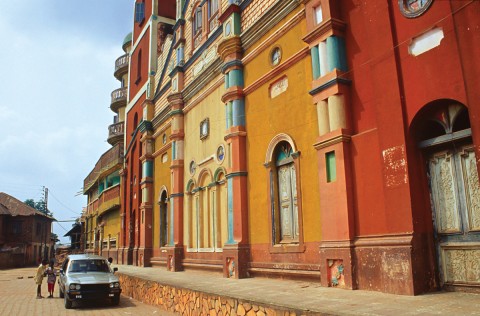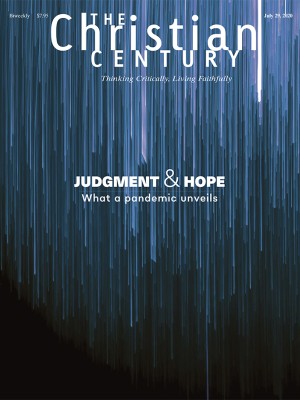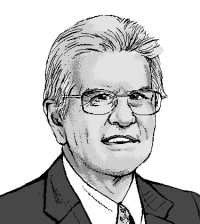In the black Atlantic region, religious identity is formed by routes rather than roots
Faith shaped by migration, diaspora, and slavery

In 1993, British scholar Paul Gilroy published his brilliant and deeply influential book The Black Atlantic, which taught a generation to study issues of race and identity not within any one nation or even continent but rather to comprehend the vast and mobile cultures spanning that ocean. He showed how “blacks have shaped a nationalism, if not a nation, within the shared culture of the black Atlantic.” Over the following decades, later scholars built upon those insights, which at every point prove vital for understanding the past, present, and future of religion in general and chiefly of Christianity.
Anyone familiar with African American religion knows the importance of the African inheritance, even if we might debate exactly how substantial it might be. But the more we use the larger canvas of the black Atlantic, the better we see the constant role of influence and interchange—not just through slavery but through missions and migrations, settlements and recolonization. (One fine work of many on this story is Andrew E. Barnes’s 2017 book Global Christianity and the Black Atlantic.) Indeed, a rare criticism that might be made of Gilroy’s original insight is its emphasis on the English-speaking Atlantic, rather than the whole polyglot transnational dimension. Today more than ever, in an age of mass international migrations, we appreciate Gilroy’s portrait of societies in perpetual movement. So much of modern Christianity is incomprehensible except in terms of that experience of migration and diaspora.
Read our latest issue or browse back issues.
These themes have been on my mind of late after I encountered a particular building that stands in Porto-Novo, the present capital of the nation of Benin. By way of context, in the 18th and early 19th centuries, European maps of West Africa classified regions according to their economic staples. From the Pepper Coast you sailed past the Gold Coast and then past the unashamedly named Slave Coast. That last area, lying between the Volta River and the Lagos Lagoon, includes the modern-day countries of Benin and Togo. The Benin city of Ouidah (Whydah) was a key emporium for the transatlantic slave trade, and those residual memories still make it a harrowing place. Ouidah is also the spiritual heart of the Vodun religion, which has had its impact across the New World under names like Voodoo.
Portuguese slavers founded Porto-Novo, which includes some impressive historical treasures. One of the finest is instantly recognizable to anyone with an appreciation for Iberian and specifically Portuguese architecture, and it could be a church or cathedral anywhere in that transcontinental colonial world. The imposing square towers leave no doubt of its cathedral character, which is all the more probable in a nation with a Christian population approaching 50 percent. It is with due shock, then, that one registers the fact that this is the city’s Great Mosque. Far from being an isolated eccentricity, such Brazilian or Portuguese-style buildings appear throughout the region, commonly in a Muslim setting.
The Great Mosque tells a potent story. Among the vast numbers of slaves the Portuguese took to Brazil were many Muslims. Many retained their cultural identity, and in 1835, Muslims staged an effective uprising in the great slave port of São Salvador da Bahia. Although the government suppressed the insurrection, it decided that these Muslims were too dangerous to be kept in place, and it began a policy of repatriation that extended to emancipated slaves. Most of these Afro-Brazilians found their way to the former Slave Coast, where they built an enduring culture that borrowed heavily from those acquired styles and traditions. The Great Mosque itself was not completed until 1935—incidentally, the centennial of the revolt. It is a perfect monument to the idea of the black Atlantic as a religious phenomenon.
But any number of sites tell a similar story from the Christian point of view. Just 60 miles east of Porto-Novo is Lagos, home of the astonishing Faith Tabernacle, founded in 1983, which seats 50,000 worshipers. Architecturally, the building is a direct facsimile of a US megachurch, and at every point the church’s worship style echoes that of American Pentecostalism. In their turn, some US megachurches—white, black, and otherwise—have consciously taken inspiration from Faith Tabernacle.
By midcentury, five of the ten largest Christian populations are projected to be in Atlantic nations: the United States, Brazil, Mexico, Nigeria, and the Democratic Republic of the Congo. This transatlantic realm is today the setting for deeply impressive missionary ventures. Brazilian churches evangelize Portuguese-speaking nations in Africa. Nigerian, Ghanaian, and Congolese denominations spread their message worldwide, but they find their most effective bridgeheads in the migrant communities spread across Europe and North America. We live in a golden age of diasporic Christianity, of many millions of believers who (in Gilroy’s splendid phrase) define their identities in terms not of roots but of routes.
A version of this article appears in the print edition under the title “The religious black Atlantic.”






